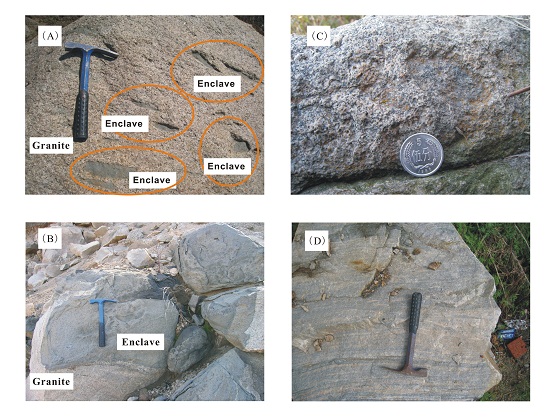|
Mantle Geochemistry
|
Lithos + JAES : Permian to Triassic magmatism in the northern margin of the North China Craton
The North China Craton (NCC) is distinguished from other global cratons by its intense decratonization during Phanerozoic. In recent years, it has become a key research field in the international Earth science community. Phanerozoic tectonics and magmatism in the northern margin of the NCC play an important part in understanding the processes involved in the destruction of the NCC. Zhou Zhang (Masters, alumni, currently Ph.D candidate at the University of Minnesota) and his advisor Dr. Hongfu Zhang carried out geochronological, petrological and geochemical work in the northern margin of the NCC. Their studies focused on the Guangtoushan granites and their enclaves in Pingquan, Hebei, and Dayingzi complex and Jiwangyingzi granitic gneiss in southern Inner Mongolia. Their research suggests that: 1. The magmatism in the northern NCC occurred from Permian to Triassic. 2. The petrogenesis of the different rocks type is diverse and includes fractional crystallization (250 Ma granites and their enclaves at 250 Ma), magma mixing (207 Ma Guangtoushan granites and their enclaves), or a combination of these two factors (Dayingzi complex from 219 Ma-226 Ma). 3. There is juvenile crustal component in the magmatic source. Combined with other studies in the northen margin of the NCC, this study shows that Permian to Triassic magmatism has juvenile crustal components, which suggests gradual upwelling of the lithospheric mantle in the northern margin of the NCC. Their research results have been published in Lithos (Zhang et al., Guangtoushan granites and their enclaves: Implications for Triassic mantle upwelling in the northern margin of the North China Craton. Lithos, 2012, 149: 174-187) and the Journal of Asian Earth Sciences (Zhang et al., Mantle upwelling during Permian to Triassic in the northern margin of the North China Craton: Constraints from southern Inner Mongolia. Journal of Asian Earth Sciences, 2014, 79: 112-129) Figure Captions:
Fig.1 The location of study area.
Fig.2 (A)250 Ma Guangtoushan granites and their enclaves; (B) 207 Ma Guangtoushan granites and their enclaves; (C)Diorite from the Dayingzi complex; (D) Granitic gneiss from Jiwangyingzi.
|
Head of Group

Prof. Ying JifengDivision of Lithosphere Evolution Tel:86 010 82998532 Email:jfying@mail.iggcas.ac.cn |
-
SIMSSecondary Ion Mass Spectrometer Laboratory
-
MC-ICPMSMultiple-collector ICPMS Laboratory
-
EM & TEMElectron Microprobe and Transmission Electron Microscope Laboratory
-
SISolid Isotope Laboratory
-
StIStable Isotope Laboratory
-
RMPARock-Mineral Preparation and Analysis
-
AAH40Ar/39Ar & (U-Th)/He Laboratory
-
EMLElectron Microscopy Laboratory
-
USCLUranium Series Chronology Laboratory
-
SASeismic Array Laboratory
-
SEELaboratory of Space Environment Exploration Laboratory
-
PGPaleomagnetism and Geochronology Laboratory
-
BioMNSFrance-China Bio-mineralization and Nano-structure Laboratory



